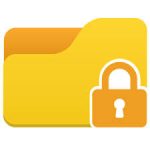
Working With Hidden Files and Folders in Windows
By Aaron Vanasse
Published on January 29, 2018 5:15 pm MT Posted in General CNSIT, Knowledge Base, Tips and Tricks, Windows
/man-hiding-in-filing-cabinet-reading-document-with-magnifying-glass-656282185-57ed1c6e3df78c690f548372.jpg) Occasionally when working with in Windows, you may experience a situation where a program or application prompts to make a change or allow a change to “hidden files and/or folders”. The reason we have hidden files and folders is to prevent accidental corruption or deletion of critical files. Most of these files will never have to be accessed by the user. By default, these files and folders will not show up in a “file search” unless changes are made, which we will see a bit later in the article. The majority of these files will be system and application files required to keep your system running well and error free.
Occasionally when working with in Windows, you may experience a situation where a program or application prompts to make a change or allow a change to “hidden files and/or folders”. The reason we have hidden files and folders is to prevent accidental corruption or deletion of critical files. Most of these files will never have to be accessed by the user. By default, these files and folders will not show up in a “file search” unless changes are made, which we will see a bit later in the article. The majority of these files will be system and application files required to keep your system running well and error free.
There is a secondary reason that a user might encounter “hidden files and folders,” user security. A user can make a hidden folder and hidden files with in that folder, by making the changes see below in the directions below. This is an added layer of security as anyone logging in as that user will not see or be able to search for those files. However, given that there must be a way to change folder/file settings from visible to hidden and then back, anyone logged in as you, with the knowledge of how to change those settings, will be able to see and search for them. We will see how to change those settings further along.
***A NOTE OF CAUTION*** Hiding folders and files is not a true security measure for the reasons mentioned above. It is only recommended to adjust these settings if you are absolutely sure you know the process to switch between the two settings.
Windows 10
- In the search box on the taskbar, type folder, and then select “show hidden files and folders” from the search results.
- Under Advanced Settings, select Show Hidden Files, Folders and Drives and then select OK.
- When you open your File Explorer window and search for hidden folder or file it will appear.
Windows 7
- Select the Start button, then select Control Panel > Appearance and personalization. Select Folder Options, then select the View ta
- Select Folder Options, then select the View tab.
- Under Advanced settings, select Show hidden files, folders, and drives, and then select OK.
As always, if you run into a problem or something you read here isn’t solving your issue, please don’t hesitate to open a ticket with our support team at: https://cnsit.colostate.edu/help
